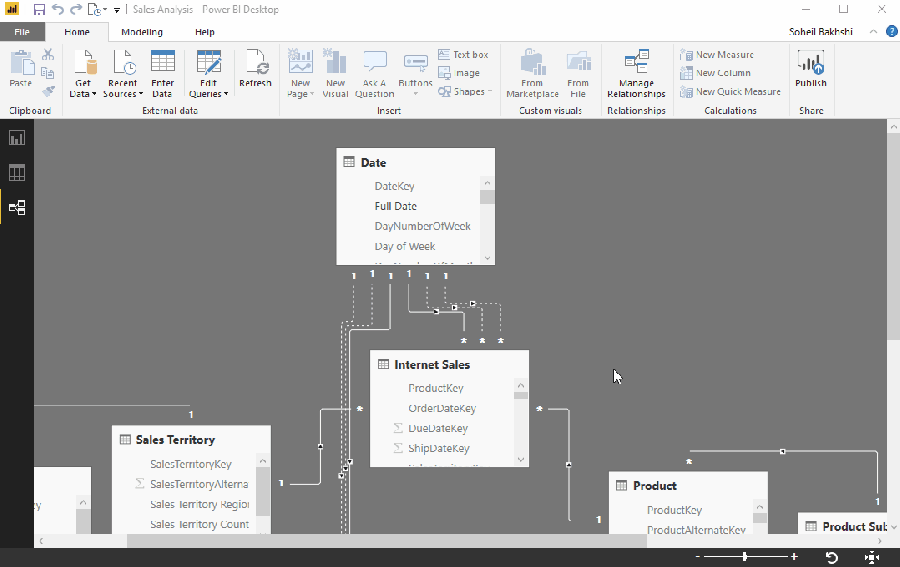DAX measures are the heart of every SSAS Tabular model, Power BI and Power Pivot solution. You write lots of DAX measures and you potentially reference some of them in other measures. So the number of DAX measures you write and reference them via other measures grow very quickly. Especially in complex solutions you may have hundreds of DAX measures. While your solution works perfectly, to make a minor change or adding a new measure to the solution or fixing a problem in your existing measures can be such a pain in the neck. In this post I’m going to take a step further and show you a simple way to get the whole data model dependencies then visualise the dependencies in Power BI. You can find the download link at the end of this post.
A simple search in Google brings you a bunch of useful articles talking about the subject. Some of the bests, in my mind, are as below:
In this post I use a DMV that gives us everything we want. ( Chris Webb already discussed the DMV here: Document Dependencies Between DAX Calculations). Running the DMV we can see what measures are references by other measures, what columns are referenced in the calculated columns and much more.
This is a very useful DMV that helps us getting a better understanding of the model we’re working on. We can also use this method for documentation.
How It Works
This method is fairly simple, you just need to run the following DMV on top of your SSAS Tabular model or your Power BI Desktop file and Import the results in Power BI.
SELECT * FROM $System.DISCOVER_CALC_DEPENDENCY
For Power BI you’ll need to find the local port number then you’re good to go. The only part that might not look very straightforward at first, would be finding the database in Power BI Desktop model.
An easy way, after you find the local port number of an opened Power BI Desktop file, is to find the database name from SQL Server Management Studio (SSMS) when connecting to the Power BI Desktop model:
- Open SSMS
- Select “Analysis Services” as “Server Type”
- Type in “localhost:PORT_NUMBER” as “Server Name” then click “Connect”

Continue reading “DAX Measure Dependencies in SSAS Tabular and Power BI” →
Like this:
Like Loading...




